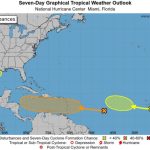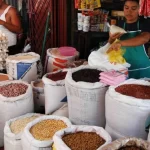Pedestrians rank second in traffic fatalities in the Dominican Republic

Every year, the Dominican Republic experiences agonizing moments due to traffic accidents.
The repercussion of this type of collision, in terms of fatalities, has not been an ‘open secret’ among the Dominican society and authorities.
Deaths from traffic accidents involving motorcycles are at the top of the official lists of the Dominican Government and reach one of the highest death rates worldwide.
However, there is another, little-exposed reality: at least 2,039 pedestrians have been run over in a range of eight years (from 2016 to August 2023), according to the General Directorate of Security and Land Transportation (Digesett).
These figures, compiled in the “Fatalities using transportation” report, indicate that pedestrians overrank as the second leading cause of death by traffic accidents in the country.
Although it is not common to hear or read every week in the media that a pedestrian has been hit by a vehicle, the reality is that this type of accident has become more relevant over the years.
The National Institute of Transit and Land Transportation (Intrant) states that for the period 2010-2016, more than 2,600 dead walkers were recorded, a reality that, according to the institution: “It accounts for nearly 20% of fatalities in traffic accidents (only behind motorcyclists).”
The most recent one recorded in the media was seven days ago (Sunday, September 10). An older man died after being run over by a car while trying to cross from one street to another on the Coral highway at the Friusa intersection in Bávaro.
That highway, located in the east of the country, with a length of 70 kilometers and inaugurated in August 2012, ranks fourth with at least 29 deaths due to road accidents, according to indicators of the Permanent Observatory of Road Safety (Opsevi), of Intrant.
It is surpassed by the six de Noviembre highway, with 33 deaths, the Las Américas highway, with 64, and the Duarte highway, with 222. The data established by Opsevi was updated up to September 2022.
The Digesett details in the report that, up to August of this year, some 180 pedestrians have lost their lives due to having suffered some collision, without specifying how or where they occurred and the types of vehicles involved.
The year that recorded the most fatalities of that nature was 2016, with at least 324. The figure dropped to 272 a year later, while 2018 closed with at least 241.
2019, it increased to 308; in 2020, the sum rose to 217. By 2021, it rose slightly to 223, as in 2022, to 274 dead walkers.
According to Intrant, the main reason why a pedestrian dies when hit by a vehicle is due to the relationship between high speed and braking distance.
“The faster a vehicle goes, the less time the driver has to brake and avoid a collision, for example, with a pedestrian,” explains the institution in the National Strategic Plan for Pedestrian Road Safety report.
The weight of the Law is not very severe for a driver involved in an accident of this category, as established in Article 49 of Law 114-99, on “blows or injuries caused unintentionally with the operation of a motor vehicle.”
For example, if the accident causes the death of one or more persons, the driver will pay a sentence of two to five years and a fine of two thousand to eight thousand pesos.
In addition, a judge will suspend the driver’s license for not less than two years or permanent cancellation.
Other reasons that put the passerby’s life at stake are the daily recklessness of the driver when they do not yield the right of way, do not respect the red light, or occupy the space of pedestrians.
The other side of the coin
The iron curtain also falls on pedestrians when they violate traffic laws, such as crossing traffic lights on red or crossing the street outside the crosswalks – parallel white markings painted on the ground.
For this reason, Intrant points out that “in 65% of the traffic accidents, the pedestrian is responsible”.
In legal matters, the Dominican Republic has a series of regulations aimed at this group through Law 63-17 on Mobility and Transportation.
This Law, in its Article 218 on “rules for the circulation of pedestrians,” establishes four provisions and additional ones contained in Article 219, which, if ignored, will be punished with the payment of an acceptable equivalent to a minimum wage of the centralized public sector: about 10,000 pesos.
“Pedestrians crossing a public road shall yield to emergency vehicles when these announce their passage with sirens or sounds for such purposes” is the first regulation in paragraph 218.
When passing through an intersection without a crosswalk, delimited by white lines on the roadway or a pedestrian bridge, pedestrians must give way to vehicles and cross only in a straight line.
Meanwhile, pedestrians may cross on roads with a crosswalk or bridge, and in case traffic lights control the intersection, the pedestrian will cross only when the light is green, or the “cross” signal is in his favor.
“Between consecutive intersections, any of which is controlled by traffic lights, he shall cross only at the crosswalks marked on the pavement,” is the regulation that continues in the list.
The Law is strict in establishing that pedestrians are under the obligation to follow the signals indicated by a Digesett agent, not being able to cross the roadway until they are allowed to do so, and in case there is a bridge or crosswalk, the passage from one way to another, must be through such structures.
Article 219 contains other restrictions, ranging from making collections and distributing advertisements to lying or sitting on the pavement.

















The pedestrians must yield is bull feathers. Whether a pedestrian is within a crosswalk or not, has lights and stop signs in his/her favor, that 90% of the time vehicles will not slow down or stop. Drivers in the country behave as people do at a free buffet arranged for 100 people when 150 people are present. When the starting gun is shot, look out! It is chaos. It is a rush to get to the front of the line, anyone interfering with one’s direct route to the buffet table is at risk of abuse. It is the same with drivers, anyone interfering with their direct route is at risk.
This article is totally and absolutely nonsense and there is not the slightest shred of evidence to support the statements. Everyone knows that very few drivers in the DR have any respect for pedestrians .The poor pedestrian does not try to get run over and in fact does everything to avoid being hit by cars but a car driver in the DR have little consideration except for himself . Consideration and courtesy are two unknown words in the vocabulary of the Dominican driver.
Maybe if Amet or whatever they are called this week did their “F’n” job, instead of checking for seatbelts when the average speed is 10mph, this kind of BS would be reduced. At least here in Punta Cana, where the millionaires drive like the poorest of the poor.
It’s normal to brake all the driving rules here…
The lack of real enforcement of traffic laws in the DR is stunning. I just recently became aware that the DR has some traffic laws and I’ve been coming here for years.
There are reams upon reams of published laws collecting dust on forgotten shelves. The annoying part is the government lacks the will to enforce the laws, just plain lazy. It is not unknown or not unsaid by the people the biggest disregarders of laws come from those who enact and/or enforce them.